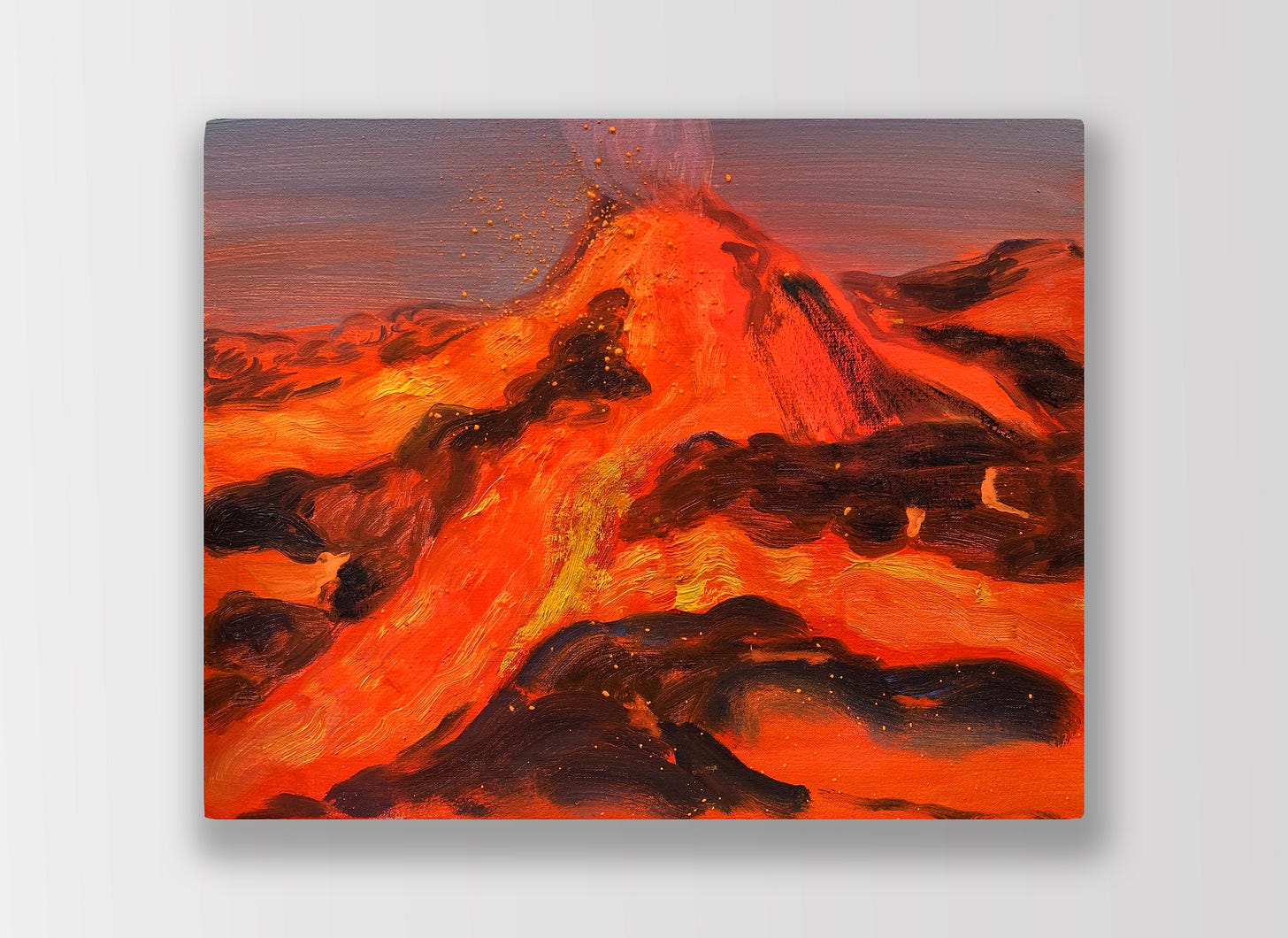My first girl crush that I could remember was in 2nd grade. She and I were assigned to work together at a table with a couple other kids that, like her, were one or two years older than me. At my elementary school we did six years of highly experimental educational formats. Every year was a different mix of kids, grades and class lengths. (I’m pretty sure we all have some trauma from that chaos.)
I remember that we were meant to do some kind of coloring task and I started by confidently picking up an orange crayon and diving in. This was my first faux pas.
My future crush, the alpha of the table, said something like, “Ew! That’s an icky color. Why would you choose that?” Quickly realizing my mistake at having rocked the boat with my radical choice of non-princess colors, I picked up a purple.
“What are you doing now? Purple and orange don’t go together,” She was frustrated and grabbed a black. My sophisticated, complimentary color palette did not land with this table of elementary students. The other girls at the table waited for further instructions before grabbing a color.
We ended up making a drawing that looked “very Halloween” with orange and black and maybe a red or brown. On this girl’s face was a look of disappointment at all the icky boy colors we had used. Instead of being annoyed by her chromophobia, I had this feeling that I had failed at something.
This girl was short, and had thick brown hair, much like me, but she was prettier and more girly. Looking back I would guess she had a mom who instructed her on how to be a woman, shopped the latest trends at the good stores, and showed her some cool things to do with her hair.
I, on the other hand, was a cute, chubby kid with a slightly funny face. I loved weird clothes because I had already accepted that I would be different because of my birth defect
It helped that I was not schooled with the same benchmarks of suburban femininity. My mom has always been more laissez faire. She was a bohemian at heart with hoodies from Sedona and loose turquoise-colored tunics. Trends and fashion magazines were for yuppies, she thought. She was naturally pretty and didn’t have to try hard with her looks - although I know she wouldn’t have said that about herself.
Despite this girl’s small-minded approach to color, something about her confidence and cool side-braid impressed me. And because of our massive age difference I deferred to her authority. I don’t know if crush is actually the right word, but I remember without much thought to it finding her picture in the yearbook later and drawing a heart around it with a blue pen.
Even to this day I cannot place the feelings I had in that moment. I did not know if I liked her, or if I wanted to be her - probably both. Plus I guess there must have been something about how in charge she was, it showed an self-assuredness that I felt I desperately lacked.
I remember telling my best friend at the time, again without much thought the way kids do, that I had put a heart around this girl’s photo. My friend made a funny face and I knew again that I had done something wrong.
My hypersensitivity to others’ needs and feelings helped me cope with the stressors of my young life. As a young sponge, I absorbed social cues (now called microagressions) that told me what was acceptable. In 6th grade when a boy in my class wore a fabulous sequin bodysuit for Halloween, it was explained that it was most likely the fault of his overbearing mother. A gay couple that are family friends were for a long time described to me as roommates. Even in high school, on my very lesbionic softball team, no one was openly out. Not that I didn’t know that our tough-as-tacks coach Terri, with her butch haircut, was gay, but it wasn’t said. All I can say was it was the 90s.
Instead of pushing back or doing my own thing, I decided to mask my perceived deficiencies with overachieving. This is where I blame my people-pleasing tendencies. If I couldn’t win the heterosexual race, I could win an Oscar for trying.
Years after graduation, one of my best friends and I were looking through old yearbooks. She saw the heart I had drawn and teased me about it. “Someone had a crush on M____!!” It was a good-natured ribbing, but I was too well-defended to come clean. “Oh yeah, blah blah blah…” Out came some stupid excuse, and that potential opening remained closed.
The color orange has since been important in my coming out journey. Last summer, while on residency at The Space Program, paintings erupted from my studio in the form of fluorescent orange lava pouring out of volcanic craters.
These works felt like such a mystery at the time, but have become symbolic of this part of my identity forcing it’s way to the surface, as if to say, it’s time. Live volcanoes, this awakening is an explosion of life force that can no longer be contained.
The color orange, as Elisabeth Workman pointed out during my artist talk this past month at Dreamsong Gallery, is the frequency of the sacral chakra. The sacral chakra, located a few fingers below your naval, rules your sense of belonging, creativity and sexual energy. If this chakra is blocked, it can call up feelings of isolation, anxiety, depression - some of the big dark ones.
As a painter, I feel strongly now more than ever that there are no bad colors only bad color combinations - and even then it’s subjective. There are colors I dislike with a passion mostly because of how they are used, (read my review of Lucy Bull’s show for a sampling), but I would never keep someone from using those colors in exactly that way just because of my own personal distaste for them.
What I would say to people with strong color preferences is what’s more important than whether you like a color is to ask, what does this color mean? What does it call up for you? What associations do you have with it and why? Then it is your responsibility to contend with your own responses in your own way.
In the mean time, live and let live. Happy Pride to those who celebrate!







There's always a brat at the table, ruining things. I'm sure whichever team her hubby follows (and you know he has one she's forced to love) has a horrible color combination that she has to live with, day in and day out. I believe that's how karma works. LOL. Or, that's how I'll picture her life, fact or fiction.
Your art remains beautiful, Sarah. xo